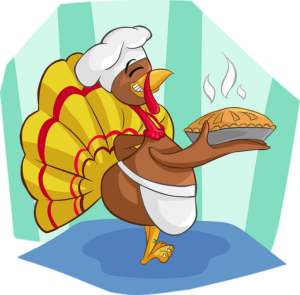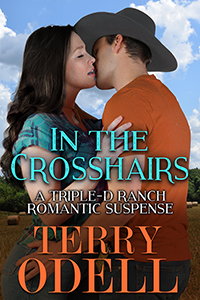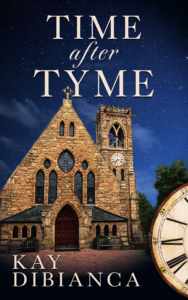By PJ Parrish
Happy post-Thanksgiving, folks. If you traveled, hope all went well and you enjoyed some good family time. As you read this, I am probably somewhere in the air, returning from Lansing, Michigan, where I had a quiet dinner with my bestie-in-life Linda. No turkey. Just a couple hens sharing a couple hens and some good pinot noir. Back to work! Here’s a First Page Critique for us to gnaw on. No turkeys here either, I’m glad to say. Just a homing bird.
THE HOMING BIRD
Heather
Victoria, Vancouver Island
Friday, October 6, 2017
7:05 AM
Every morning, I take a forty-five minute drive to my favorite screaming beach.
Its rocky shoreline spills discretely off the edge of a remote provincial park. Decades ago, someone must’ve pulled heavy cargo ashore, because there’s a sandy clearing on the beach between the large rocks. It’s my runway to the sea, a path to the place where the tide meets the shore. It’s where I stand every day, all year round, fiercely emptying my lungs at the horizon.
I get out of my truck, donning the gumboots that are always tucked under the passenger seat. I wait until my eyes adjust to the dawn’s low light, then walk through the long grass, over the crunchy seaweed, and along the sandy path that leads me to the water’s edge. I wait for a moment, allowing the roar of the sea to wash over me like an auditory embrace.
The water is rough today, and the wind stings my eyes, lifting my long, salt-soaked hair around my head like the strings of a puppeteer. Autumn is my favourite season; it’s the time when everything slows down and goes inward.
It also means that less tourists stroll the beach, so I can spend as long as I like throwing my screams out into the vast foamy sea.
I look around to check that the beach is deserted, that there are no early morning kayakers who could pick up on the sounds of my laments crossing the waves. I don’t want to draw attention to myself; it’s not about that. It’s about sending a loaded missive to the God or Universe or Spirit who’ve failed me. It’s the only ritual and the only form of catharsis that I allow myself.
I’ve never been very good at therapy. It makes me too nervous. I sit like a specimen, like an inexperienced, malnourished mountaineer, in front of a kindly stranger who invites me to explore my twisted internal topography. Demons wait around every corner, popping out of crevices, reminding me of my many failures: not living up to my mother’s impossible standards, not protecting my sister, and the pathetic way I begged to stay in the Fellowship after I was deemed an apostate.
“No one,” a therapist once said to me, “is more qualified to heal you, to mother you, than you.”
___________________
This came in with no particular sub-genre other than “mystery,” so that’s what we’ll assume here. We can also assume our writer is Canadian, given the location, spellings (ie favourite) and words like “gumboots” instead of the American term galoshes and “provincial park” instead of “national park.”
There is much I really like about this submission. I love the opening line. It starts out so ho-hum and ends with a hammer of an image. There’s a fancy word for this — Paraprosdokian. It means an unexpected shift in meaning at the end of a sentence. Here, the writer sets us up with the calm words “Every morning I take a drive…” And then adds “to my favorite screaming beach.” Love this effect. It pulled me in from the get-go.
What does the opening line also accomplish? A hint to the sense of place (shoreline). A not-so-subtle hint that Heather is deeply troubled; the mood is tense. And third, we get a clear voice. So bravo, writer.
The writer is also skillful in her/his descriptions, and you know I am always asking for more than we usually get. The beach “spills off” the edge of a park. Seaweed is “crunchy” underfoot. Not much meat here, but what’s there is cherse.
I do think the writer gets a little bogged down as the paragraphs pile up, however, in trying to look more writerly than necessary. The simple and very effective images of the opening beach imagery give way to some borderline overwrought imagery when we get to Heather’s thoughts. On the beach, we are hearing Heather’s voice, but when we get inside her head, the writer’s voice begins to intrude some. It’s a fine line, but an important one. For example, in one graph, we are given THREE images to digest: first Heather as “specimen,” presumably being examined under the shrink’s microscope. Then comes the laden image of Heather as a “malnourished mountaineer” befriended by a stranger. And finally, Heather as a victim of harpy-like demons screaming out her inadequacies.
Do you see the problem I have with this? As impressive as the writing seems on first glance (and this is a deft writer), as you begin to digest it, the three images compete with each other in a sort of dyspeptic stew. Dear writer, you are too good to let this happen, so I’d suggest a hard second look and that you select one metaphor/image to burnish. I rather like your phrase about twisted internal topography because it echoes the beach location. Remember: Your setting should also MEAN something. You chose a craggy windswept beach for a reason — perhaps because it mirrors Heather’s tortured and lonely psyche? Something to think about.
Now, we should address the fact that nothing much is really happening here. We have a woman with a dark past walking down a beach stalked by demons. I’m okay with slow-build openings, but only to a point. Heather isn’t doing. She’s thinking. And while your set up is intriguing, if you stay in this woe-is-me reminiscence too much longer, your reader will get antsy for action. Also, you cite the idea of a “screaming beach” in four versions.. You need to trust the reader to get it the first time and move on. Something has to happen. And thinking about your past isn’t enough. You must move the PRESENT plot forward. I’m going to show you an example of how this might work in the following edit. My comments are in red.
Heather
Victoria, Vancouver Island
Friday, October 6, 2017
7:05 AM I am an avowed-not-a-fan of taglines like this. Unless you are going to switch into multi-POVs and settings or time frames, I’d suggest finding a way to incorporate this info into the narrative. You do this well already by telling us it’s dawn and it’s fall, so just find a way to weave the locale.
Every morning, I take a forty-five minute drive to my favorite screaming beach. Love love love this. But “favorite” implies she has more than one screaming beach. More powerful if you delete “favorite” imo, so it becomes the creepily possessive and deeply personal “my screaming beach.”
Its rocky shoreline spills discretely Discrete means distinctive or unique. Discreet is means secret or modest. Because most folks confuse the two I’d find a better word off the edge of a remote provincial park. Decades ago, someone must’ve pulled heavy cargo ashore, because there’s a sandy clearing on the beach between the large rocks. It’s my runway to the sea, a path to the place where the tide meets the shore. Second line is redundant. Love the runway image but maybe it could be stronger? It’s not just a path to the sea but rather a runway to, in her sad state, what the sea represents — freedom? Oblivion? You’ve missed a chance to make the metaphor mean more. It’s where I stand every day, all year round, fiercely emptying my lungs at the horizon. Another “screaming beach” reference. You’ve already told us she does this. Move on.
I get out of my truck, donning the gumboots that are always tucked under the passenger seat. I wait until my eyes adjust to the dawn’s low light, then walk through the long grass, over the crunchy seaweed, and along the sandy path that leads me to the water’s edge. I wait for a moment, allowing the roar of the sea to wash over me like an auditory embrace. Very pretty phrase but you call it a roar, so isn’t that at odds with the gentle phrase “auditory embrace”? Isn’t a sea-roar more of an sensory assault? I know this sounds like picking nits, but description must be precise for it to ignite the reader’s senses. As Poe said, every word, phrase and sentence you write must work to create a UNITY OF EFFECT to create consistent mood.
The water is rough today, and the wind stings my eyes, lifting my long, salt-soaked hair around my head like the strings of a puppeteer. Autumn is my favourite season; I’d lose all the semi-colons. Nobody thinks in semi-colons. it’s the time when everything slows down and goes inward. Also, here is where you can tell us it’s October rather than relying on a tagline. It’s more connective to your character to have this info emerge via her thoughts and senses rather than in a bland tagline. Something like “October is my favorite month, a time when everything slows, blurs and begins to go inward. This time of year, it feels like the whole of Vancouver Island is retreating into the mist. (That’s awful but you get the idea).
It also means that less fewer tourists stroll the beach, so I can spend as long as I like throwing my screams out into the vast foamy sea. This is the third reference to what she is GOING to do. We want to see her do it.
I look around to check that the beach is deserted, that there are no early morning kayakers who could pick up on the sounds of my laments crossing the waves. Fourth reference. We get it. I don’t want to draw attention to myself; it’s not about that. It’s about sending a loaded missive missive is a letter, a rather passive little word. Is there a more powerful one? Grievance? Screed? Rant? What emotion are you trying to convey here exactly from Heather? I am not quite getting it. Your scene is SO personal and emotional. Make your word choices all go to that unity of effect! to the God or Universe or Spirit who’ve failed me. It’s the only ritual and the only form of catharsis that I allow myself.
Pause here for a second and consider this: You need to have something happen in the present time, to get us out of her thoughts. How about if you put the primal scream right here on camera? Does it help her? Does it bring relief? The fact that she is compelled to do it EVERY DAY implies to me that it’s not working. It might make a very powerful scene here if you give us the scream NOW. Then give us an emotional reaction from Heather. THEN go into the backstory below. Whatever she feels AFTER the scream would then logically make her think about how therapy was no help either. I don’t like to rewrite anyone’s work but allow me to give an example so you see why this might work:
I close my eyes and the scream erupts from me, ringing in my head but lost in the roar of the waves. I scream, scream, scream until my lungs burn and my throat is raw. When I open my eyes, my face is wet from the wind and my tears.
I should feel empty but I don’t. It’s still there. That black box deep inside me is still there and all the winged-things have escaped from it again and are beating hard to burst out of my chest. I choke back a sob, trying to force them back into the box.
It doesn’t work. It never does.
I think of Dr. Martin and what she told me two months ago, the last time I showed up for one of our sessions.
No one is more qualified to mother you than you.
By giving us the scream now, this would then logically lead Heather — and your readers — into her backstory, especially if it involves something amiss about her mother. I love that line about no one can heal you but yourself, which is why I set it apart by itself. I might be wrong, but I think it’s one of your themes. But put that scream in your first 400 words, please. Act first and then explain!
I’ve never been very good at therapy. It makes me too nervous. I sit like a specimen, like an inexperienced, malnourished mountaineer, in front of a kindly stranger who invites me to explore my twisted internal topography. I’m not sure I get this mountaineer reference. Do you mean to imply she lost her way on a steep journey? Okay. But for the “kindly stranger” to work, you need to balance the metaphor — the therapist is metaphorically a guide who finds her on the mountain? Demons wait around every corner, popping out of crevices, reminding me of my many failures: not living up to my mother’s impossible standards, not protecting my sister, and the pathetic way I begged to stay in the Fellowship after I was deemed an apostate. This is very interesting because you giving us hints of backstory — that her mom was difficult, she failed to protect (nicely loaded word!) her sister and that she was a member of “the Fellowship” which kicked her out. (intriguing! Religion? Cult? Makes us want to read on)
Also: Something to reconcile. A paragraph ago you had her yelling at the gods who you say “failed” her. And now you say the demons are reminding her that she herself failed. She can’t blame fate if she believes it is her fault.
“No one,” a therapist once said to me, “is more qualified to heal you, to mother you, than you.” So did the scream work or not?
Okay, let’s summarize. This is good stuff. You’re truly a good writer. I am engaged by the scene you’ve set up with the screaming beach. Terrific idea. But I started to get impatient with being stuck only in Heather’s thoughts, and I think this great beginning could be energized by a healthy primary scream. Let go, Heather!
Thanks so much, dear writer, for brightening my day with The Homing Bird. Vancouver is one of my favorite spots on earth (though I’ve never seen the sunrise on Victoria Island!) and I would read on, definitely. My suggestions are merely that, one reader’s opinion. Please know that the better you are, the harder I am on you. Good luck!

 The holiday season is a hectic time, with planning the perfect family celebration, shopping for gifts, decorating the house, inside and out, and mailing cards.
The holiday season is a hectic time, with planning the perfect family celebration, shopping for gifts, decorating the house, inside and out, and mailing cards. Today we have another first page for the TKZ critique machine.
Today we have another first page for the TKZ critique machine. Hope you all had an amazing Thanksgiving!
Hope you all had an amazing Thanksgiving!








 If I may riff off
If I may riff off